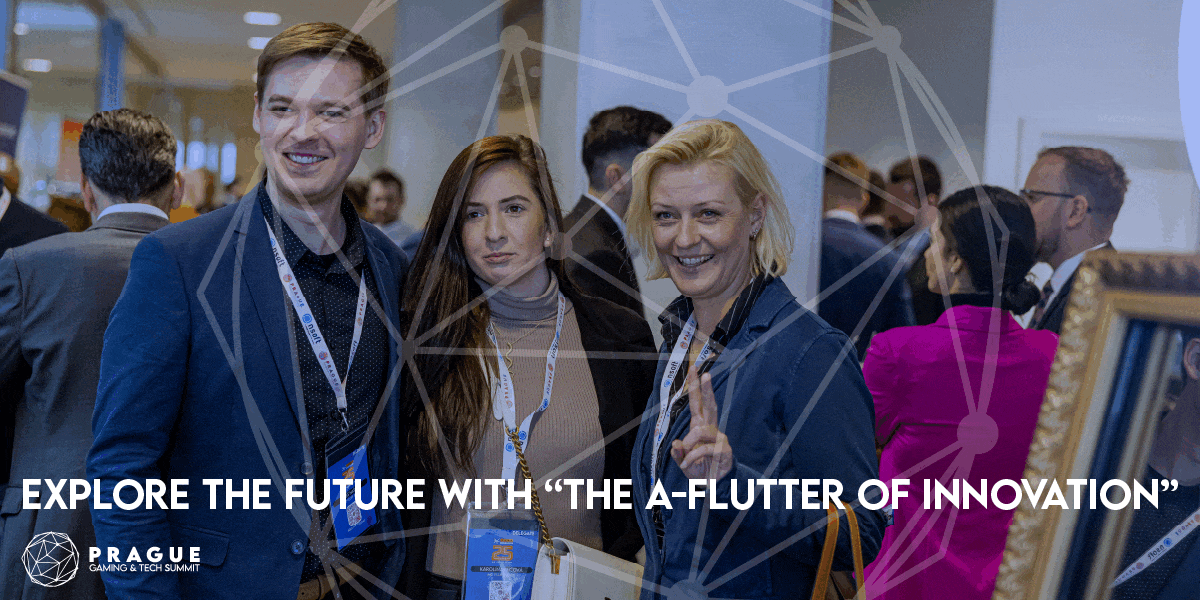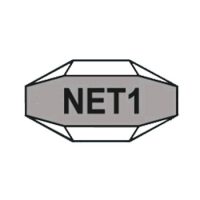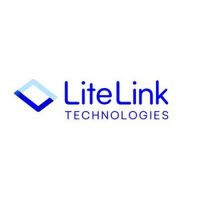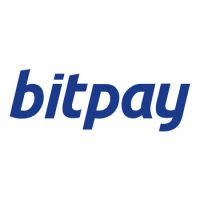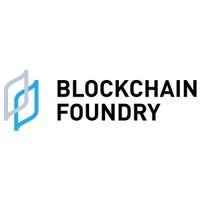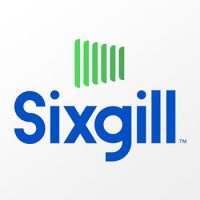Blockchain
MoneyGram International Reports Fourth Quarter and Full Year 2019 Financial Results

MoneyGram International, Inc. (NASDAQ: MGI) today reported financial results for its fourth quarter and full year ending December 31, 2019.
Fourth Quarter Business Update
- MoneyGram’s business transformation continued to accelerate, demonstrated by the success of MoneyGram’s direct-to-consumer digital business in addition to continued better-than-expected expense reductions as a result of modernizing and digitizing global operations.
- MoneyGram Online achieved 39% year-over-year transaction growth in the fourth quarter, led by strong international performance, with transaction and revenue growth of 113% and 53%, respectively.
- International markets, which represent 62% of total money transfer revenue, strengthened both sequentially and year-over-year, posting 7% transaction growth and 3% revenue growth from the same quarter in 2018.
- MoneyGram continued to launch innovative solutions to improve the customer experience and to lead the evolution of digital P2P payments. Exciting recent launches include the innovative FastSend™ service enabling customers to send money directly to a phone number. Additionally, MoneyGram continued to expand its strategic partnership with Ripple as the first money transfer company to scale the use of blockchain capabilities.
Commenting on the progress made in 2019, Alex Holmes, Chairman and CEO noted, “This was a pivotal year for us as we continued to execute our digital transformation and deliver a differentiated experience to our customers. Throughout the year we launched innovative product solutions, invested in new technology, renewed key partner relationships, led the industry in consumer protection and re-established our competitive position in the market. The combination of our efforts is resonating with consumers around the world. Our direct-to-consumer digital business achieved strong growth rates and international markets continued to outperform, which enabled us to return to transaction growth in the month of December. Importantly, we also delivered record online digital transaction growth during the 2019 holiday season and reported Adjusted EBITDA for the fourth quarter that exceeded our expectations.”
Fourth Quarter 2019 Financial Results
- Revenue was $323.7 million, a decline of 6% from the fourth quarter 2018. Revenue excludes $8.9 million of benefit from Ripple, which will be accounted for as a contra expense rather than revenue based on a recent consultation with the Securities and Exchange Commission.
- At the time the Company issued fourth quarter guidance, it assumed Ripple market development fees would be accounted for as revenue, consistent with the third quarter treatment. As a result of the change, the Ripple financial benefit of $8.9 million in the fourth quarter and $2.4 million in the third quarter is now accounted for as offset to operating expenses, in Transaction and Operations Support and is no longer included in revenue.
- Global Funds Transfer segment revenue was $299.7 million, down 6% from the fourth quarter of the prior year. Within the segment, money transfer revenue was $285.9 million, a decline of 6%, and bill payment revenue was $13.8 million.
- Investment revenue was $12.4 million, a decline of $1.6 million from the fourth quarter in 2018.
- Total operating expenses were $311.0 million, an improvement of $21.1 million over the fourth quarter of 2018. This is an improvement of 6% from 2018’s fourth quarter.
- Net loss was $11.9 million compared with $12.5 million for the fourth quarter of 2018.
- Adjusted EBITDA was $57.6 million compared with $60.0 million in the previous year’s fourth quarter. Adjusted EBITDA margin improved to 17.8% from 17.4% in the fourth quarter of 2018.
- Diluted loss per share was $0.16 and adjusted diluted income per share was $0.01.
- Adjusted Free Cash Flow was $19.8 million.
Full Year 2019 Financial Results
- Total revenue of $1,285.1 million declined 11% on a reported basis and 10% on a constant currency basis compared to 2018. Revenue excludes $11.3 million of Ripple benefit, which is now recorded as a contra expense.
- Global Funds Transfer segment revenue was $1,183.3 million. The segment revenue is comprised of money transfer revenue of $1,123.9 million and bill pay revenue of $59.4 million.
- Total operating expenses were $1,233.1 million for the full year, which includes $11.3 million benefit from Ripple.
- Net loss was $60.3 million compared with $24.0 million in 2018. The year-over-year change was primarily due to a $31.3 million non-cash pension settlement charge related to the sale of the pension liabilities, a $2.4 million of debt extinguishment costs, as well as a $30.0 million merger termination payment received in 2018.
- Adjusted EBITDA was $213.7 million, a 13% decrease on a reported basis and an 11% decrease on a constant currency basis compared to 2018. The decrease is primarily related to the decrease in revenue.
- For the year, diluted loss per share was $0.85 and adjusted diluted income per share was $0.03.
- Adjusted Free Cash Flow was $62.4 million. The $38.6 million decrease from 2018 is composed of lower Adjusted EBITDA and higher cash payments for interest.
Balance Sheet Highlights and Capital Structure Highlights
Cash and cash equivalents on hand at December 31, 2019 totaled $146.8 million compared to $145.5 million at the end of 2018. Fourth quarter and full year interest expense was $24.3 million and $77.0 million, respectively. Capital expenditures in 2019 were $54.5 million.
First Quarter 2020 Outlook
For the first quarter 2020, the Company anticipates total revenue of approximately $300 million, and Adjusted EBITDA of approximately $50 million, both on a constant currency basis.
“We have invested proactively during the past several years to re-position MoneyGram as a modern, mobile, API-driven organization that is leading the evolution of digital P2P payments. While we begin 2020 with challenges in our US-outbound and US domestic walk-in businesses, we have a significant pipeline of agent renewals and new signings along with innovative digital products and growth opportunities that have the potential to offset these challenges and improve our financial performance,” said Holmes. “We will continue to focus on growing our customer base, while implementing market-specific strategies that set us uniquely apart from the competition. We are excited about the underlying strength in our business and the momentum created by the transformation of our business.”
Forward-Looking Statements
This communication contains forward-looking statements which are protected as forward-looking statements under the Private Securities Litigation Reform Act of 1995 that are not limited to historical facts, but reflect MoneyGram’s current beliefs, expectations or intentions regarding future events. Words such as “may,” “will,” “could,” “should,” “expect,” “plan,” “project,” “intend,” “anticipate,” “believe,” “estimate,” “predict,” “potential,” “pursuant,” “target,” “continue,” and similar expressions are intended to identify such forward-looking statements. The statements in this communication that are not historical statements are forward-looking statements within the meaning of the federal securities laws. Specific forward-looking statements include, among others, statements regarding the company’s projected results of operations, specific factors expected to impact the company’s results of operations, and the expected restructuring and reorganization program results. Forward-looking statements are subject to numerous risks and uncertainties, many of which are beyond MoneyGram’s control, which could cause actual results to differ materially from the results expressed or implied by the statements. These risks and uncertainties include, but are not limited to: our ability to compete effectively; our ability to maintain key agent or biller relationships, or a reduction in business or transaction volume from these relationships, including our largest agent, Walmart, whether through the introduction by Walmart of additional competing “white label” branded money transfer products or otherwise; our ability to manage fraud risks from consumers or agents; the ability of us and our agents to comply with U.S. and international laws and regulations; litigation or investigations involving us or our agents; uncertainties relating to compliance with the DPA entered into with the U.S. federal government and the effect of the DPA on our reputation and business; regulations addressing consumer privacy, data use and security; our ability to successfully develop and timely introduce new and enhanced products and services and our investments in new products, services or infrastructure changes; our ability to manage risks associated with our international sales and operations; our offering of money transfer services through agents in regions that are politically volatile; changes in tax laws or an unfavorable outcome with respect to the audit of our tax returns or tax positions, or a failure by us to establish adequate reserves for tax events; our substantial debt service obligations, significant debt covenant requirements and credit ratings; major bank failure or sustained financial market illiquidity, or illiquidity at our clearing, cash management and custodial financial institutions; the ability of us and our agents to maintain adequate banking relationships; a security or privacy breach in systems, networks or databases on which we rely; disruptions to our computer network systems and data centers; weakness in economic conditions, in both the U.S. and global markets; a significant change, material slow down or complete disruption of international migration patterns; the financial health of certain European countries or the secession of a country from the European Union; our ability to manage credit risks from our agents and official check financial institution customers; our ability to adequately protect our brand and intellectual property rights and to avoid infringing on the rights of others; our ability to attract and retain key employees; our ability to manage risks related to the operation of retail locations and the acquisition or start-up of businesses; any restructuring actions and cost reduction initiatives that we undertake may not deliver the expected results and these actions may adversely affect our business; our ability to maintain effective internal controls; our capital structure; and uncertainties described in the “Risk Factors” and “Management’s Discussion and Analysis of Financial Condition and Results of Operations” sections of MoneyGram’s public reports filed with the Securities and Exchange Commission (the “SEC”), including MoneyGram’s annual report on Form 10-K for the year ended December 31, 2018 and MoneyGram’s quarterly reports on Form 10-Q.
Additional information concerning factors that could cause actual results to differ materially from those in the forward-looking statements is contained from time to time in MoneyGram’s SEC filings. MoneyGram’s SEC filings may be obtained by contacting MoneyGram, through MoneyGram’s web site at ir.moneygram.com or through the SEC’s Electronic Data Gathering and Analysis Retrieval System (“EDGAR”) at http://www.sec.gov. MoneyGram undertakes no obligation to publicly update or revise any forward-looking statement.
Non-GAAP Measures
In addition to results presented in accordance with accounting principles generally accepted in the United States (“GAAP”), this news release and related tables include certain non-GAAP financial measures, including a presentation of EBITDA (earnings before interest, taxes, depreciation and amortization, including agent signing bonus amortization), Adjusted EBITDA (EBITDA adjusted for certain significant items), Adjusted EBITDA margin, Adjusted Free Cash Flow (Adjusted EBITDA less cash interest, cash taxes and cash payments for capital expenditures and agent signing bonuses), constant currency measures (which assume that amounts denominated in non-U.S. dollars are translated to the U.S. dollar at rates consistent with those in the prior year), adjusted diluted earnings per share and adjusted net income. In addition, we present adjusted operating income and adjusted operating margin for our two reporting segments. The following tables include a full reconciliation of non-GAAP financial measures to the related GAAP financial measures. The equivalent GAAP financial measures for projected results are not provided, and projected results do not reflect the potential impact of certain non-GAAP adjustments, which include (but in future periods, may not be limited to) stock-based, contingent and incentive compensation costs, compliance enhancement program costs, direct monitor costs, legal and contingent matter costs, restructuring and reorganization costs, currency changes and the tax effect of such items. We cannot reliably predict or estimate if and when these types of costs, adjustments or changes may occur or their impact to our financial statements. Accordingly, a reconciliation of the non-GAAP financial measures to the equivalent GAAP financial measures for projected results is not available.
We believe that these non-GAAP financial measures provide useful information to investors because they are an indicator of the strength and performance of ongoing business operations. These calculations are commonly used as a basis for investors, analysts and other interested parties to evaluate and compare the operating performance and value of companies within our industry. Finally, EBITDA, Adjusted EBITDA, Adjusted EBITDA margin, Adjusted Free Cash Flow, constant currency, adjusted diluted earnings per share and adjusted net income figures are financial and performance measures used by management in reviewing results of operations, forecasting, allocating resources or establishing employee incentive programs. Although MoneyGram believes the above non-GAAP financial measures enhance investors’ understanding of its business and performance, these non-GAAP financial measures should not be considered in isolation or as substitutes for the accompanying GAAP financial measures.
SOURCE MoneyGram International, Inc.
Blockchain
Blocks & Headlines: Today in Blockchain – April 24, 2025 (Decrypt, CoinDesk, Cointelegraph, 80 Level, UNDP/BGA)

In an era defined by rapid innovation and ever-shifting regulatory landscapes, blockchain continues to prove its mettle across diverse sectors—from data privacy and prediction markets to gaming and sustainable development. Today in Blockchain, we explore five major developments shaping the decentralized world on April 24, 2025:
-
Europe’s New Privacy Guidelines: How the EDPB’s draft rules may redefine on-chain data handling.
-
Canada’s Blockchain Advantage: Lessons from Consensus Toronto on agility, talent, and national strategy.
-
Prediction Markets for Science: DeSci’s leap toward crowdsourced validation and the reproducibility crisis.
-
Ubisoft’s NFT Gaming Gamble: Yet another Web3 pivot in mainstream video games—and why it matters.
-
Blockchain for Good Accelerator: The UNDP joins forces with the Blockchain for Good Alliance to fuel SDG-focused innovation.
This op-ed–style briefing strips away the noise to deliver concise yet detailed coverage, incisive commentary, and big-picture implications for developers, entrepreneurs, regulators, and enthusiasts alike. Strap in as we decode today’s key blockchain headlines.
1. Europe’s Data Privacy Guardrails: EDPB’s Draft Blockchain Guidelines
What happened:
On April 22, 2025, the European Data Protection Board (EDPB) published draft guidelines clarifying how personal data must be stored and accessed on blockchain networks to comply with the General Data Protection Regulation (GDPR). Key takeaways include:
-
Minimize on-chain data: Avoid embedding personally identifiable information directly into immutable ledgers.
-
Data Protection by Design & by Default: Mandate early-stage DPIAs (Data Protection Impact Assessments) for any blockchain project touching personal data.
-
Controlled access & erasure mechanisms: Develop off-chain storage layers and governance protocols to satisfy “right to rectification” and “right to be forgotten” requirements.
Source: Decrypt
Why it matters:
GDPR’s foundational principles clash with blockchain’s inherent immutability and transparency. By issuing these guidelines, the EDPB seeks to preserve individual privacy rights without stifling decentralized innovation. However, the tension between censorship-resistant networks and regulator-mandated mutability raises profound design challenges.
Analysis & Commentary:
Today’s guidance is overdue but pivotal. As Bryn Bennett of Hacken reminds us, “Privacy isn’t an add-on—it’s infrastructure.” Projects that ignore privacy-by-design risk not only fines but also eroded user trust. Conversely, decentralized privacy pioneers like Nym Technologies warn that retrofitting GDPR onto public blockchains can compromise both privacy and sovereignty. In my view, the next frontier lies in hybrid architectures—leveraging off-chain zero-knowledge proofs, secure enclaves, and permissioned sidechains—to reconcile transparency with confidentiality. Europe’s blueprint could become a global reference, influencing regulators in Asia-Pacific, North America, and beyond to articulate their own blockchain-specific data rules.
2. Canada’s Blockchain Advantage: Small Enough to Move Fast, Big Enough to Matter
What happened:
At Consensus Toronto 2025, CoinDesk columnist William Mougayar argued that Canada is uniquely positioned to outpace other G7 nations in blockchain adoption, thanks to:
-
Homegrown talent & heritage: Ethereum’s origins in Toronto and thriving developer ecosystems in Montreal and Vancouver.
-
Regulatory agility: Streamlined federal-provincial coordination, pro-innovation tax credits, and pilot sandbox frameworks.
-
Strategic national vision: Proposals to mandate crypto access in Canadian banks, integrate digital assets into capital markets, and even explore a national cryptocurrency reserve.
Source: CoinDesk
Why it matters:
While the U.S. grapples with interagency turf wars between the SEC, CFTC, and others, Canada’s structural simplicity offers a template for coherent blockchain policymaking. This could accelerate capital inflows, enterprise pilots, and global competition for fintech talent.
Analysis & Commentary:
Canada’s playbook hinges on being “small enough to pivot, yet big enough to impact”. As blockchain matures beyond niche use cases, national champions will emerge from jurisdictions that marry regulatory clarity with creative incentives. I predict that within two years, Toronto and Montreal will rival Miami and Dubai as leading hubs for DeFi, tokenization, and digital-asset custody. But execution is everything—if Canada can streamline licensing, shore up AML/CTF safeguards, and embed digital literacy into its education system, it could truly leapfrog entrenched incumbents.
3. Prediction Markets in Science: DeSci’s Bold Experiment
What happened:
In an opinion piece for Cointelegraph, Dr. Sasha Shilina explored how blockchain-powered prediction markets (e.g., Polymarket, Pump.science) are being repurposed to address the scientific reproducibility crisis. Highlights include:
-
Crowdsourced forecasting: Researchers and investors stake tokens to bet on experimental outcomes, incentivizing rigorous study design.
-
Financial accountability: Monetary losses for flawed work create a rapid feedback loop, potentially weeding out irreproducible findings.
-
Regulatory hurdles: Jurisdictions still classify these markets as gambling, complicating mainstream adoption.
Source: Cointelegraph
Why it matters:
Traditional peer review can take months or years to expose methodological flaws. Decentralized prediction markets promise near-real-time validation, democratizing scientific oversight and reducing wasteful replication studies.
Analysis & Commentary:
Prediction markets offer an “open-science complement”—not a replacement—to scholarly publishing. By aligning economic incentives with truth-seeking, they could elevate data integrity and funders’ confidence. However, unchecked speculation risks gaming the system, especially if liquidity pools are dominated by a handful of whales. The solution lies in multi-stakeholder governance: academic consortia, journal publishers, and veteran researchers collaborating to set market parameters, oracle standards, and dispute-resolution mechanisms. In my view, the coming year will determine whether DeSci moves from proof-of-concept to institutional legitimacy—or remains a fascinating experiment.
4. Ubisoft’s NFT Gaming Bet: Might & Magic Fates
What happened:
On April 24, 2025, gaming giant Ubisoft announced Might & Magic Fates, its third blockchain game in under six months, developed in partnership with Immutable. Key features:
-
NFT trading cards: Creatures, spells, and artifacts minted as on-chain assets.
-
Optional Web3 layer: Players can choose between traditional gameplay or unlocking digital ownership via NFTs.
-
Community backlash: Early reactions decry “Web3 slop,” with seasoned gamers lamenting lack of gameplay previews.
Source: 80 Level
Why it matters:
Ubisoft’s persistence underscores a broader corporate push into play-to-earn and digital-ownership models. Despite vocal skepticism, top publishers see NFTs as a path to new revenue streams and player engagement metrics.
Analysis & Commentary:
I admire Ubisoft’s willingness to iterate—but will “third time be the charm”? Past misfires suggest they’ve yet to nail the balance between token mechanics and fun. If Fates can deliver rich narrative, balanced tokenomics, and genuine secondary-market value, it might convert skeptics. Otherwise, gamers will continue associating NFTs with pump-and-dump schemes. Successful blockchain gaming will require tight integration of on-chain assets with deep, off-chain gameplay loops—think on-chain skins that evolve with player achievements or governance tokens that shape in-game lore. Ubisoft’s true test will be fostering an ecosystem where NFT ownership enhances, rather than distracts from, core gameplay.
5. Blockchain for Good: UNDP & Alliance Launch Global Accelerator
What happened:
The Blockchain for Good Alliance (BGA), in partnership with the United Nations Development Programme (UNDP) and EMURGO Labs, launched the SDG Blockchain Accelerator on April 24, 2025. Program highlights:
-
4-month accelerator: Tailored training, mentorship, and technical support via UNDP AltFinLab and EMURGO Labs.
-
Multi-chain innovation: Encourages solutions across Cardano, Ethereum, and other protocols.
-
Up to $1.5 million in post-acceleration grants: Equity-free funding to scale blockchain solutions addressing the UN’s 17 Sustainable Development Goals (SDGs).
Source: UNDP Innovation
Why it matters:
This initiative bridges Web3 technology with humanitarian impact, channeling blockchain’s transparency and efficiency into real-world challenges—financial inclusion, supply-chain traceability, carbon credits, and more.
Analysis & Commentary:
SDG-focused accelerators signal a shift from speculative token swaps to impact-driven development. By equipping UNDP personnel and global innovators with blockchain toolkits, the program can catalyze projects that deliver measurable social value. Success stories—like transparent vaccine distribution chains or micro-loan platforms for underserved communities—will validate blockchain’s promise beyond hype cycles. I urge stakeholders to watch for pilots that blend on-chain verification with off-chain delivery, ensuring that funding flows transparently and outcomes are independently audited. If this Alliance proves out, it could redefine public-private partnerships in digital development.
Conclusion: Today’s Takeaways & Tomorrow’s Roadmap
These five headlines illustrate blockchain’s multifaceted evolution:
-
Regulatory Maturation: Europe’s privacy guidelines spotlight the need for nuanced frameworks to guide on-chain data use.
-
National Strategies: Canada’s agile approach demonstrates how government policy can catalyze ecosystem growth without heavy-handed bureaucracy.
-
Decentralized Science: Prediction markets could revolutionize research validation, forging new alliances between academia and DeFi.
-
Corporate Experimentation: Ubisoft’s repeated NFT forays reveal both the promise and pitfalls of integrating blockchain into mainstream entertainment.
-
Mission-Driven Innovation: The SDG Blockchain Accelerator aligns decentralized tech with societal goals, charting a course for truly “blockchain for good” outcomes.
As blockchain technology accelerates, the imperative for thoughtful design, cross-sector collaboration, and impact measurement has never been clearer. Whether tackling data privacy conflicts, mobilizing global talent, democratizing scientific rigor, reinventing digital ownership, or driving sustainable development, today’s stories offer a roadmap for the next chapter of decentralized innovation.
Stay tuned for tomorrow’s edition of Blocks & Headlines, where we continue decoding the daily pulse of the blockchain revolution.
The post Blocks & Headlines: Today in Blockchain – April 24, 2025 (Decrypt, CoinDesk, Cointelegraph, 80 Level, UNDP/BGA) appeared first on News, Events, Advertising Options.
Blockchain
World Chess and the Algorand Foundation propose leveling the playing field with a “chess passport”
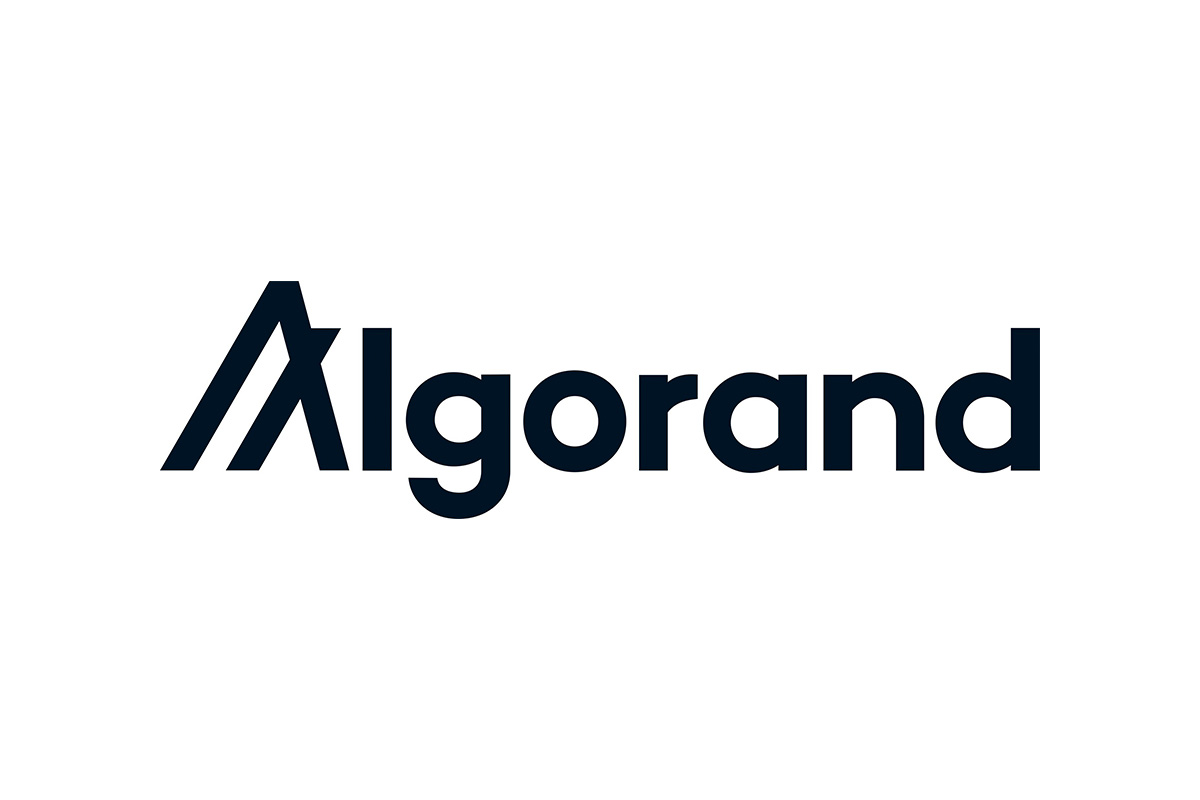
In a whitepaper published today, World Chess (LSE: CHSS) and the Algorand Foundation (ALGO) conceptualize a new blockchain-based system that would establish secure, private, and verifiable credentials for global sports organizations, including chess. Grandmaster Evgenij Miroshnichenko contributed to the paper alongside the Algorand Foundation and World Chess.
The move comes as interest in chess hits a new high, driven by popular television series on Netflix and the BBC, the 2024 awarding of the youngest-ever world chess champion, and the inclusion of chess for the first time in the Esports World Cup later this year.
If adopted, the system would allow chess players to independently manage their identity and credentials across all chess platforms and organizations with a single decentralized ID, and one login credential for everywhere they play. They could then easily “port” their identity, achievements, records of play, rankings, and rewards across online chess platforms, as well as seamlessly from the digital world to in-person games and tournaments. This provides them with a much easier way to prove their identity, no matter their status or documentation; it would also reduce tournament application times significantly. Chess organizations would then be able to welcome even more players to their competitions, including those who have built their chess career solely online, as well as players who have previously only competed in tournaments held by other organizations.
Among other benefits, the adoption of a “global chess passport” would make it much easier for organizers and chess clubs and federations alike to onboard and register players, both online and offline.
Another benefit of the proposed system is to safeguard fair play. As chess becomes increasingly integrated into e-sports and online competitions, the use of AI programs or player fraud (one player representing another) is an increasing concern. Being able to confirm player integrity (including whether they have been banned for cheating on any other platform) ensures credibility of chess contests and competitions. These verifiable credentials also preserve player privacy. They can be used to confirm player eligibility and relevant identity data without providing access to sensitive documentation, such as passports. Finally, identity verification also prevents fraud in tournament payouts. Phishing and other attempts to steal winnings are on the rise; this ensures only the rightful winner can access their prize funds.
“I think that chess needs its version of the global e-version of drivers license. It’s a global game, and using blockchain for the benefit of having one universal independently verifiable ID is something that both players and organizers will certainly benefit from,” says Ilya Merenzon, CEO of World Chess.
“This initiative is not just about chess; it’s about the future of fair play and verifiable achievement across all sports and esports,” said Bruno Martins, principal architect at the Algorand Foundation and co-author of the whitepaper. “Chess has a rich history of proving the usefulness of new technologies. In this case, World Chess is showing the integrity, privacy, and portability of records in any competitive arena is not only possible – it’s in the best interest of every player, everywhere.”
Statista estimates that the market for esports should reach $4.8 billion in 2025, with nearly 900 million players by 2029 (source), all of which could benefit from better cross-platform registration for online and in-person competitions.
The full whitepaper and more information about the proposed open-source system can be found here. Chess platforms, esports organizations and other parties interested in contributing to the project can get involved by contacting [email protected].
The post World Chess and the Algorand Foundation propose leveling the playing field with a “chess passport” appeared first on News, Events, Advertising Options.
Blockchain
Blaqclouds Board Approves 30-Day Revenue Acceleration and Ecosystem Monetization Plan
-

 Blockchain Press Releases6 days ago
Blockchain Press Releases6 days agoBybit’s CEO Meets with Vietnam’s Minister of Finance to Support Regulatory Sandbox and Strengthen Crypto Compliance
-

 Blockchain7 days ago
Blockchain7 days agoGlobal Islamic Fintech Forum Kicks off in Dubai
-
Blockchain4 days ago
Islamic finance Market to Reach $3.4 Trillion by 2027 in the short run and $7.7 Trillion by 2033 Globally, at 12.0% CAGR: Allied Market Research
-

 Blockchain Press Releases7 days ago
Blockchain Press Releases7 days agoBybit launches Crypto Surf: Copy Traders and Bots Battle for 250K USDT
-

 Blockchain3 days ago
Blockchain3 days agoBlocks & Headlines: Today in Blockchain – April 22, 2025 (Activity‑Weighted Consensus, Pectra Upgrade, Yoki Legacy, Verae–Evercycle, Earth Day)
-

 Blockchain2 days ago
Blockchain2 days agoBlocks & Headlines: Today in Blockchain – April 23, 2025 – EDPB, Binance, MicroCloud, Nile Coin, TruaBroker
-

 Blockchain Press Releases4 days ago
Blockchain Press Releases4 days agoIntroducing Clementine Bridge: Citrea Deploys First Complete BitVM Bridge Design on Testnet
-

 Blockchain Press Releases4 days ago
Blockchain Press Releases4 days agoBingX Brings Balance (EPT) to Spot with a 200 Million EPT Xpool

